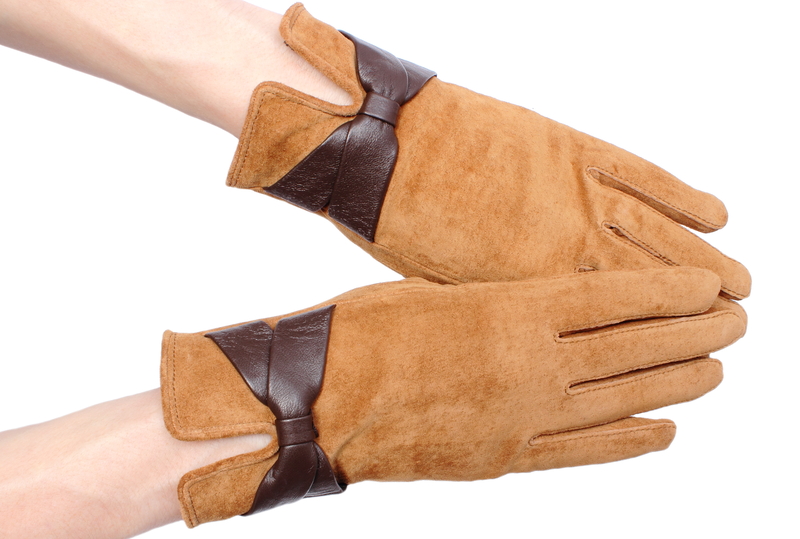Dust-Busting Techniques: Keep Your Household Allergen-Controlled
Posted on 30/08/2025
Dust-Busting Techniques: Keep Your Household Allergen-Controlled
Are you tired of dealing with sneezing, watery eyes, or congestion in your own home? Household allergens, particularly dust, can be a persistent problem that impacts your family's health and comfort. With a proactive approach and effective dust-busting techniques, you can keep your living space allergen-controlled and breathe easier every day. In this comprehensive guide, we'll explore methods to reduce dust, control allergens, and maintain a healthier household environment.

Why Controlling Household Allergens Matters
Dust may seem harmless, but it's a complex mixture of tiny particles such as pollen, pet dander, textile fibers, skin cells, and even dust mite droppings. These components can trigger allergic reactions and respiratory issues, especially in children and individuals with asthma or allergies.
- Improved indoor air quality leads to fewer allergic reactions and respiratory problems.
- Allergen reduction can create a more comfortable and restful home for everyone.
- Targeted cleaning prevents dust accumulation and limits the growth of dust mites and mold.
Understanding the causes and solutions for household dust will help you master effective dust-busting strategies.
Sources of Household Dust and Allergens
To successfully minimize indoor allergens, you should know where household dust originates. Here are the most common sources:
- Textiles: Carpets, curtains, upholstered furniture, and bedding can trap and release dust particles.
- Pets: Pet hair and dander significantly contribute to indoor allergens, especially in multi-pet homes.
- Windows and Air Vents: Pollen and outdoor dust enter through open windows, doors, and ventilation systems.
- Foot Traffic: Dirt and dust are tracked indoors from shoes and outdoor clothing.
- Human Skin Cells: People shed millions of skin cells daily, forming the basis for dust mite colonies.
Implementing dust-busting techniques in each area of your home ensures thorough allergen control and a cleaner environment.
Effective Dust-Busting Techniques for an Allergen-Controlled Home
1. Regular Cleaning Routines
A consistent cleaning schedule is crucial for keeping household allergens under control. Here's how you can maintain a dust-free space:
- Dust frequently: Use microfiber cloths or electrostatic dusters rather than traditional feather dusters, which often spread particles.
- Work from top to bottom: Begin dusting at the highest surfaces (shelves, ceiling fans) and move downward. This method ensures you collect all the falling dust.
- Don't forget hidden spaces: Clean behind furniture, under beds, and in corners where dust accumulates unnoticed.
Sticking to a weekly dusting and vacuuming routine will keep allergen levels low and make your deep cleans far easier.
2. Vacuuming with HEPA Filters
Ordinary vacuums may recirculate dust and allergens back into your home's air. To truly control household dust:
- Invest in a vacuum cleaner with a High-Efficiency Particulate Air (HEPA) filter.
These advanced filters capture at least 99.97% of particles as small as 0.3 microns, keeping allergens such as dust mites and pet dander contained. Vacuum all carpets, rugs, and upholstered furniture at least twice weekly, and don't forget hard floors, too.
3. Wash Bedding and Fabrics Frequently
Dust mites thrive in warm, humid environments--most notably your bedding. To keep your bedroom allergen-reduced:
- Launder sheets, pillowcases, and blankets weekly in hot water (at least 130?F/54?C).
- Use allergen-proof covers on mattresses, box springs, and pillows to create a protective barrier against dust mites.
- Reduce extra fabric: Minimize decorative pillows and throws, which easily collect dust.
If possible, opt for washable curtains or blinds that can be cleaned regularly for optimal allergen control.
4. Minimize Clutter and Dust Collectors
Clutter not only makes cleaning more difficult but also harbors dust in hard-to-reach places. Streamline your belongings by:
- Limiting knickknacks, stacks of paper, and unneeded decor that accumulate dust.
- Storing items in closed cabinets or containers, especially in bedrooms and living areas.
- Organizing closets and avoiding overcrowding, as dust can settle on shoes, clothes, and shelves.
Less clutter means fewer places for allergens to hide and greatly simplifies your dust-busting efforts.
5. Utilize Air Purifiers and Improve Ventilation
Air purifiers are an excellent addition to any allergen-controlled household. When selecting a purifier:
- Choose a model with a true HEPA filter to trap microscopic particulates effectively.
- Place air purifiers in high-traffic rooms, such as living rooms and bedrooms, for optimal results.
Additionally, ensure your home is well-ventilated:
- Open windows strategically when outdoor pollen counts are low.
- Use exhaust fans in kitchens and bathrooms to remove moisture and limit mold growth.
Improved airflow helps disperse dust and allergens, reducing their overall concentration indoors.
6. Control Pet Allergens
Pets are common contributors to indoor allergens. To keep your household allergen-controlled with animals:
- Bathe pets regularly and brush them outdoors to minimize shedding and dander indoors.
- Designate pet-free zones, especially in bedrooms.
- Wash pet bedding and toys weekly to prevent dander buildup.
These steps will dramatically reduce airborne pet allergens and improve the quality of your indoor air.
7. Manage Humidity Levels
Dust mites and molds flourish in humid environments. The ideal indoor humidity for cutting dust allergies is between 30% and 50%. To achieve this:
- Use a dehumidifier in damp areas such as basements and bathrooms.
- Fix leaks and control sources of excess moisture throughout the home.
- Use air conditioning during humid seasons to maintain optimal air dryness.
Controlling humidity will make your dust-busting efforts more effective and discourage dust mite growth.
8. Replace or Clean HVAC Filters Regularly
Your home's heating and cooling systems play a significant role in circulating dust and airborne allergens. An essential dust-control tip is:
- Replace HVAC filters every 1-2 months, and opt for high-efficiency filters designed to trap finer particles.
- Schedule professional duct cleaning every few years, especially if you notice visible dust buildup or suspect mold growth.
Well-maintained HVAC systems prevent recirculation of dust and keep your indoor air fresh and allergen-controlled.
Room-by-Room Guide to Allergen Control
Each area in your home has unique dust-busting challenges. Here's how to target allergens room by room:
Living Room
- Choose smooth, easy-to-clean surfaces over textured or fabric-heavy decor.
- Vacuum sofas, chairs, and carpets with a HEPA-filter vacuum twice weekly.
- Declutter end tables and shelves to reduce dust collection.
- Consider replacing drapes with blinds or curtains made from washable fabric.
Bedroom
- Wash bedding weekly in hot water.
- Use hypoallergenic mattress and pillow covers.
- Store clothing in drawers and closed closets, rather than exposed shelves.
- Keep pets out of bedrooms for maximum dust-allergen control.
Kitchen
- Wipe countertops and cabinet tops regularly.
- Use exhaust fans to vent excess moisture during cooking.
- Store food in airtight containers to avoid attracting pests that contribute to allergens.
Bathroom
- Use a squeegee to dry shower walls and tile after use, preventing mold buildup.
- Wash bathmats and shower curtains frequently.
Entryways and Hallways
- Use doormats at every entrance to trap outdoor dust.
- Request family and guests remove shoes upon entering.
- Vacuum and mop floors frequently to keep tracked-in allergens under control.
Advanced Tips for Fighting Dust and Allergens
- Steam clean carpets and upholstery every 3-6 months to remove embedded allergens.
- Opt for hard flooring, such as wood or tile, instead of wall-to-wall carpeting when possible.
- Install washable air vents and clean them regularly to prevent dust buildup.
- Store soft toys and blankets in sealed plastic bags or bins when not in use.
- Seal cracks and gaps in walls and windows to prevent dust and pollen intrusion from outdoors.
Myths About Household Dust and Allergen Control
Don't let misconceptions stand in the way of a cleaner, allergen-reduced home! Here are a few myths debunked:
- Myth: All air purifiers are the same.
Fact: Only HEPA-filtered purifiers remove particles small enough to reduce allergens effectively. - Myth: "Green" cleaning products are always better for allergens.
Fact: Some natural products may lack the cleaning power needed to fully remove dust and mites. Always use proven, non-toxic cleaners. - Myth: Light dusting is enough.
Fact: True dust-busting requires deep cleaning, including floors, filters, and fabrics.

When to Seek Professional Help for Allergen Control
Sometimes, even the best dust-busting efforts can fall short--especially if you have severe allergies or underlying health problems. Professional services may provide:
- Deep carpet and upholstery cleaning to eliminate stubborn dust, pollen, and dander.
- HVAC system and duct cleaning to prevent circulation of hidden allergens.
- Allergy-proof home assessments that identify and remedy sources of dust and mold.
If symptoms persist or worsen despite regular cleaning, consult an allergist for personalized advice and possible allergy testing.
Conclusion: Enjoy a Breath of Fresh Air
With these dust-busting techniques, you're well on your way to maintaining a cleaner, allergen-controlled household. Remember, consistency is key. Combine regular cleaning routines, smart storage choices, air purification, and humidity control for an environment where you and your family can thrive. Breathe easier, sneeze less, and enjoy the health benefits of a dust-reduced home starting today!
Your home should be your trusted sanctuary--don't let dust and allergens rule the roost. Take charge with proactive dust-busting methods and embrace the difference a truly clean living space can make.




